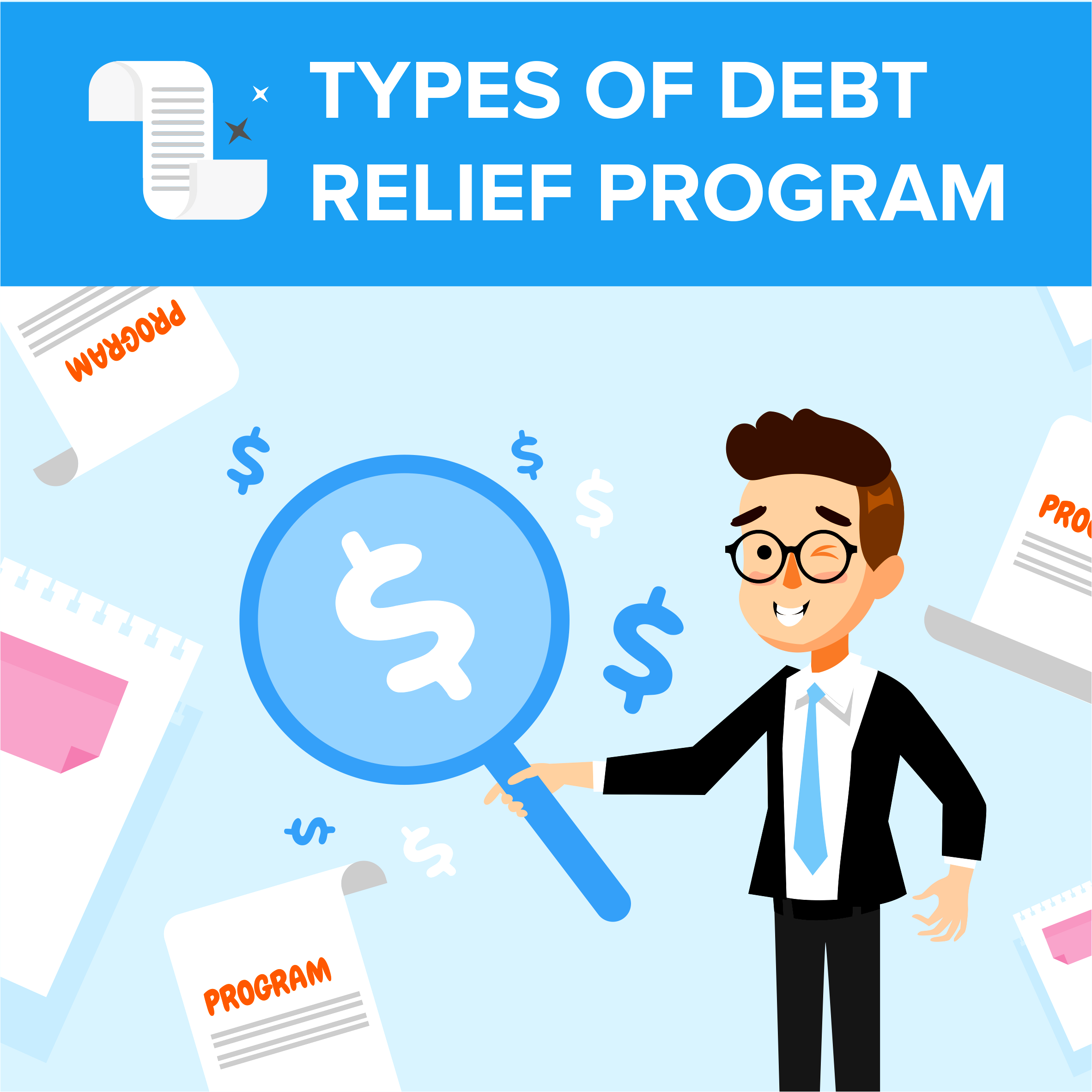
When you find yourself in debt, the consequences can be quite debilitating, the issue consuming every aspect of your life, making it difficult for you to focus on anything else, whether it be work or rest.
Everybody in debt requires a resolution to the problem. This is where debt relief programs come in.
We have gathered all recent news and information about various types of debt relief programs and combined them into one interesting article. Let us look at different types of debt relief programs out there for you to choose from.
Deferment
This debt relief option permits the person in debt to temporarily have all their debt payments suspended. Once you have secured approval from the lender, you can delay the repayment of your debt without having to incur any penalties, also avoiding the creation within your credit report of negative items, items that can lower your score.
While the debt is deferred, interest charges still apply, except in certain circumstances. These circumstances include a situation where you have a student loan from the government that is subsidized. The payment is delayed until you have left the school, with the government taking care of your interest charges. But, should your loan not be subsidized, the payment is still deferred, yet the interest charges still apply, the amount of debt increasing with time. Deferment is used most often on student loans, but it is also possible to apply it on other forms of debt.
Forbearance
This debt relief program has many similarities with a deferment. Here, the lender can agree to decrease or entirely suspend monthly payments. However, one difference between deferment and forbearance is that the period of suspension in forbearance is shorter than the period of suspension in deferment. The lender usually grants forbearance if contacted when the time of financial problems begins. If someone foresees that they cannot make their payments, forbearance can be requested before falling behind on payments.
This debt relief program is typically used for people when it comes to mortgages and student loans. Another difference between deferment and forbearance is that in forbearance, interest charges apply in nearly all circumstances. However, qualifying for forbearance is generally much easier than qualifying for deferment. It can be useful for other forms of debt as well, such as credit cards.
Refinancing
Forbearance and deferment simply alter the payment schedule for a given span of time. Refinancing, on the other hand, changes the loan permanently. The primary aim of refinancing is lowering the interest rate, which is applied to the debt. Refinancing can provide other benefits as well, given the right circumstances, benefits including lower payments per month.
The lowering of the interest rate that applies to one’s debt allows one to make significant savings over the period of the loan lasts. Student loans, auto loans, and mortgages can be refinanced, qualifying the applicant for new interest rates that are determined by their credit scores. Refinancing is also available for student loans paid by the government. Refinancing is not available for credit card debt. Lowering the interest rates on credit cards is referred to as interest rate negotiation. Only closed debts can be refinanced.
Modification
Modification of a loan forever alters lending agreement’s terms. Whereas refinancing decreases the rate of interest, modification alters the principal amount of a loan or the period of the term of a loan. Applicants can switch from adjustable to fixed rates of interest. Modification helps borrowers to meet their needs, achieving lower payments.
Mortgages are most commonly modified.
Consolidation
The process of consolidating debt combines a variety of debts into one monthly payment within a brand-new loan or credit line. It makes borrowers’ jobs easier, giving them only one monthly payment to worry about instead of multiple ones.
Consolidation can be used to accomplish many goals, such as lowering monthly payments, lowering the interest rate, and simplifying the repayment schedule. It is usually used to deal with student loan debts and credit card debts. Each debt has to be consolidated separately.
Repayment plans
Repayment plans make no difference to the loan, but simply modify the debt’s payment schedule. Repayment plans effectively replace the schedule of the loan repayment. It is most often seen among people with student loan debts and tax debts.
Settlement
This option damages your credit the most. None of the other options damages your credit score if they are used correctly. They have a neutral effect on one’s credit score at worst. Some options even improve it. Debt settlement, however, nearly always results in damage to credit score.
The settlement allows you to settle your debt to a creditor or lender for an amount less than what you originally owed. It can be used for private student loans, tax debt, and credit card debt.
Forgiveness
This option is quite rare. It clears your debt and you do not have to pay for any penalties.




